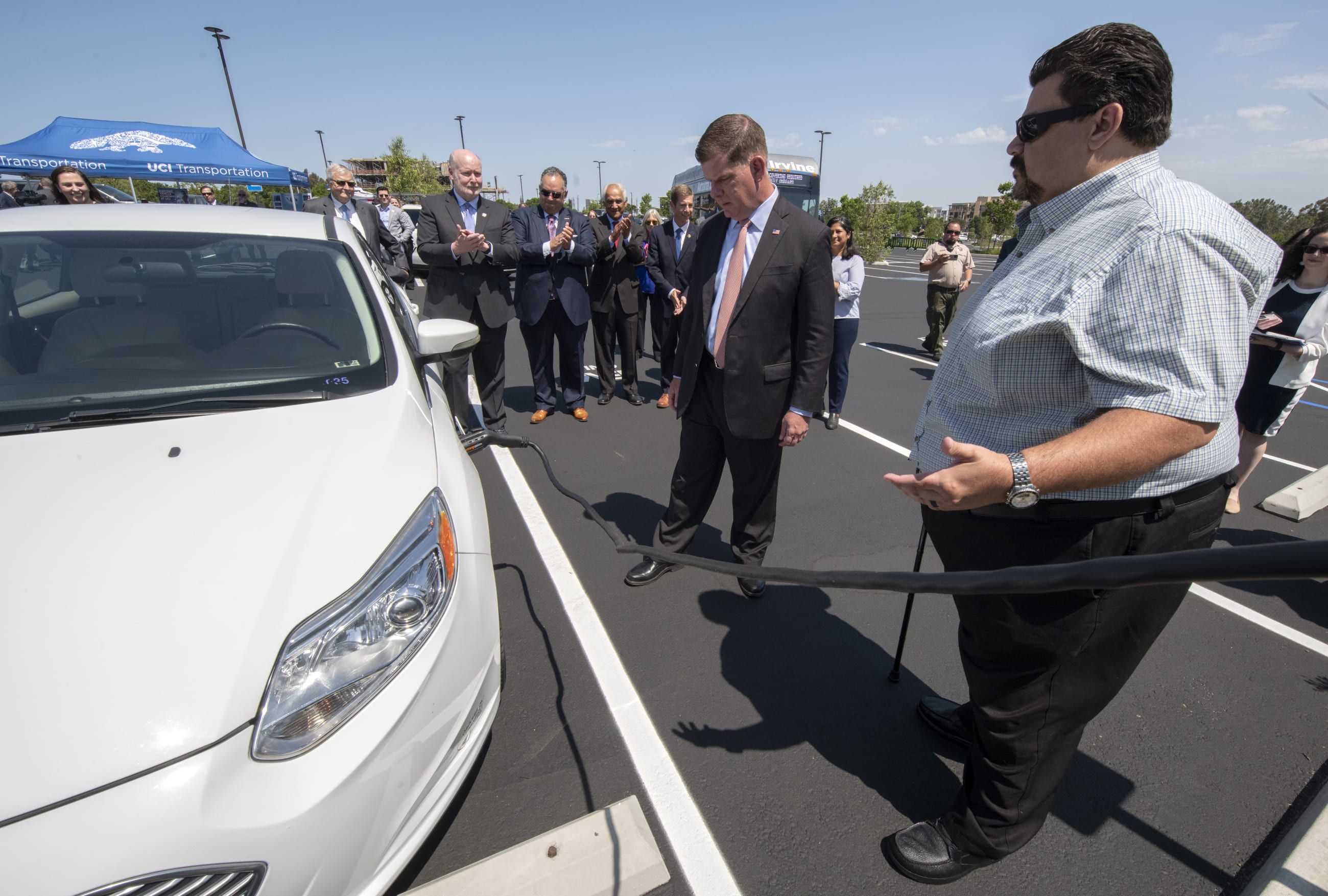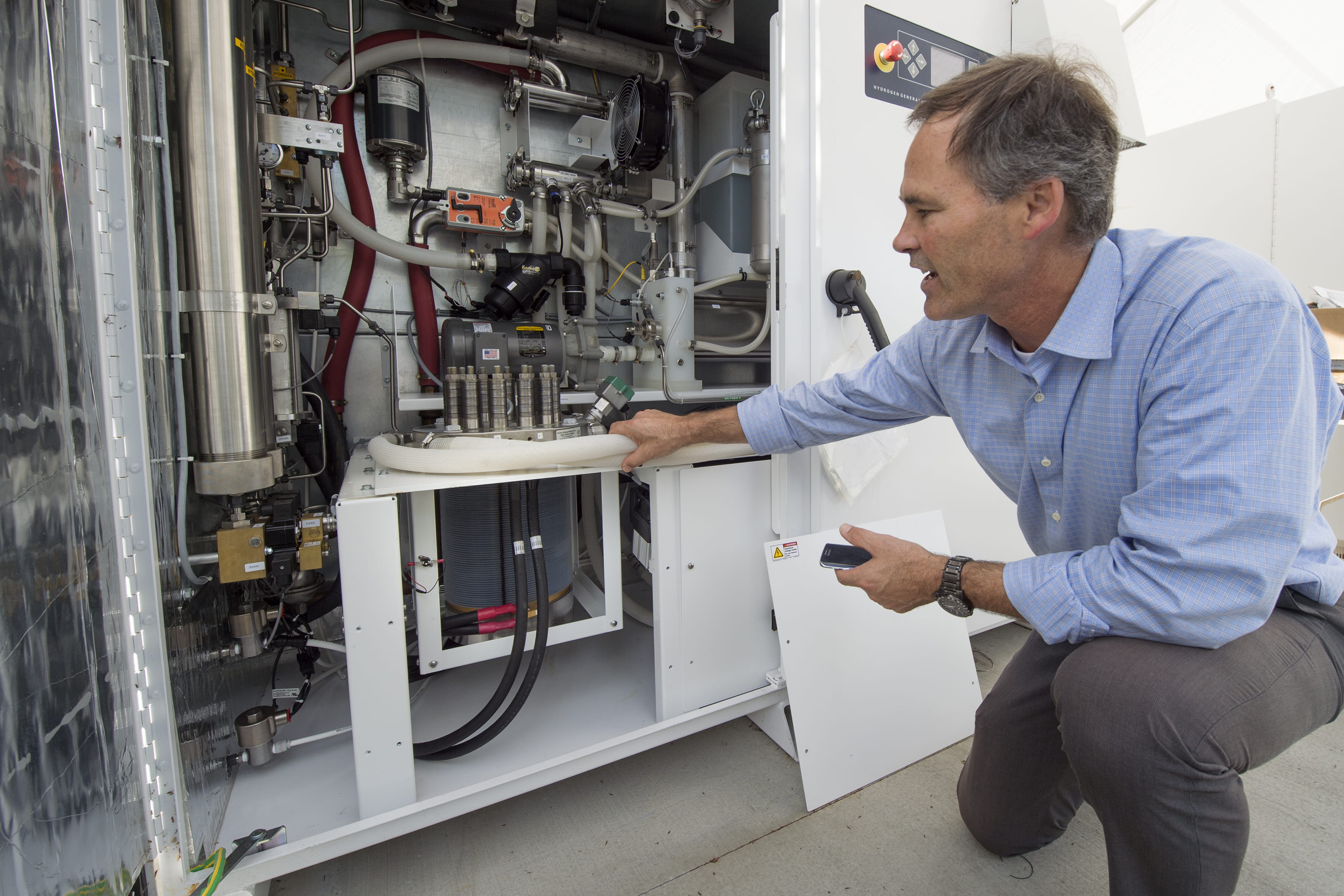Power player
Vice Chancellor Wendell Brase is widely credited with curbing campus’s energy consumption and costs

Wendell Brase stops midstride behind the Bonney Research Laboratory and cocks an ear. “Hear that? That fan is much too loud. We need to do something about that,” he says. “Noise is the signature of energy waste.”
Most vice chancellors for administrative & business services might not notice the dull roar of a building fan. But take a stroll with Brase and you quickly realize he sees the entire UC Irvine campus as a smoothly humming field laboratory. The experiment: how little energy can be used to power a major university?
Brase arrived at UC Irvine in 1991 to a $5 million accumulated shortfall in electricity, water and sewage costs that surged higher every time a new building was added. Today the utilities budget is balanced, the campus generates up to 95 percent of its own power, and it is widely recognized as one of the nation’s cleanest and greenest.
UC Irvine and a handful of other U.S. university campuses are perpetually neck and neck in the quest for the most Leadership in Energy & Environmental Design (LEED) platinum or gold buildings. UC Irvine currently has 19. The school is also consistently among the Sierra Club’s top 10 “Cool Schools,” moving up to No. 3 in 2013, one of half a dozen similar honors this year.
Many on campus and elsewhere credit the levelheaded and persistent Midwesterner, who’s relentless about energy savings and pollution reduction, as well as his hard-working staff.
“Wendell Brase has always believed that universities have a special role and special responsibility in confronting the challenges of sustainability and environmental stewardship,” says Harvard Executive Vice President Katie Lapp, who worked with Brase when she oversaw climate change initiatives at the University of California Office of the President.
“He has ensured that UC Irvine is a leader in implementing innovative solutions that build a healthier, more sustainable campus.”
A familiar figure to maintenance workers and the chancellor alike, Brase credits many others on campus for the awards and daily successes.
“This is not about one person,” he says. “People who are able to balance idealism with pragmatism and are determined to overcome obstacles will succeed. UC Irvine has many people who fit this description, and they are the ones making this campus a national exemplar of environmental stewardship.”
UC Irvine has many bells and whistles such as student bike sharing (begun here long before the trend took hold elsewhere) and solar panels on numerous rooftops. But campus infrastructure is where Brase and his team have made the largest gains in energy efficiency.
“There are a lot of inefficiencies designed into buildings that are just sitting there ready to be discovered and remedied,” he says.
UC Irvine now relies on a state-of-the-art, $27 million cogeneration facility that produces up to 19 million watts from low-polluting natural gas. The central plant also captures a high percentage of the heat discharged from a combustion turbine engine and uses it to generate 2 to 5 million watts for campus cooling and heating demands.
The power is also much cleaner – a NOx monitor shows just how clean. Nitrous oxide, one of the components of deadly smog, has long been studied in UC Irvine’s premier air pollution labs.
A few hundred yards away, the power plant routinely emits 1.2 parts per million, well below the 2 ppm allowed by regional air regulators. “That’s my favorite number,” says Brase, gazing at the array of monitors inside the plant’s control room. “Reduced NOx is a major factor in Southern California’s improved air quality.”
Brase, who grew up in a small Iowa prairie town, says he got his grounding in environmental stewardship the old-fashioned way: He was an Eagle Scout and wilderness canoe guide in northern Wisconsin.
“That kind of experience gives you a rudimentary understanding of just how complex and fragile nature is,” he says.
Brase earned bachelor’s and master’s degrees from the Sloan School of Management at the Massachusetts Institute of Technology. He worked in industry and at the University of Rochester and at UC Santa Cruz before coming to UC Irvine.
When Brase arrived more than two decades ago, he identified the major reasons for the high energy bills. The biggest was consuming two-thirds of all the electricity used on campus: research labs. Building control systems have now been re-engineered from top to bottom to sharply reduce that. The “Smart Labs” concept relies on sensors and software to continuously monitor and manage energy usage, occupancy rate and air quality on a zone by zone basis, optimizing air exchange rates, for instance.
Another big target was lighting on campus sidewalks, in parking structures and elsewhere. Nearly all of it has now been retrofitted with efficient induction lamps or LED bulbs.
“The more efficiencies we make, the more challenging it becomes. But this campus will prove just how far dedicated people using the latest technologies can go,” Brase says.


